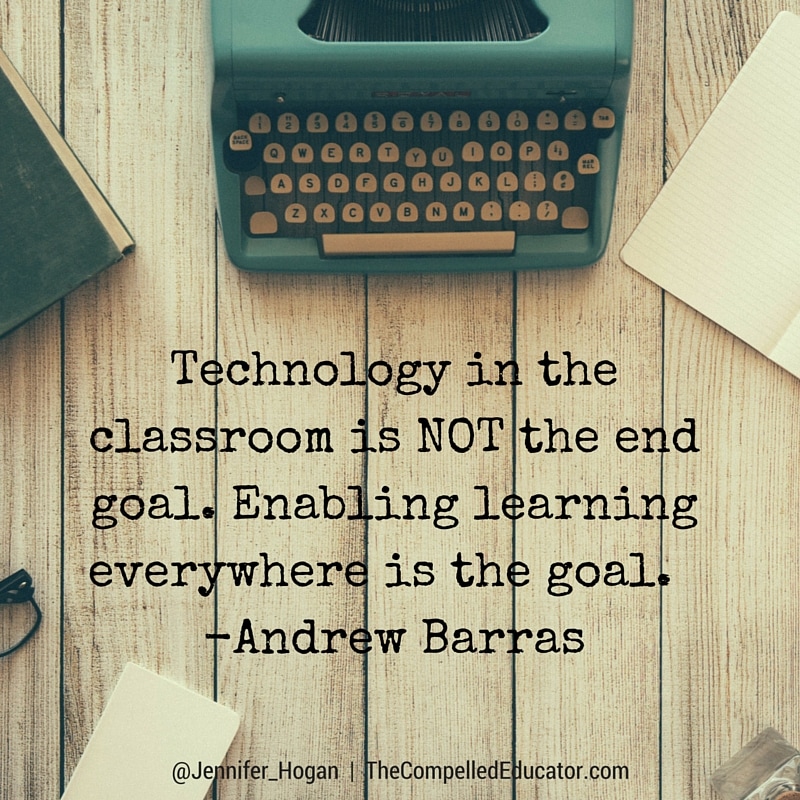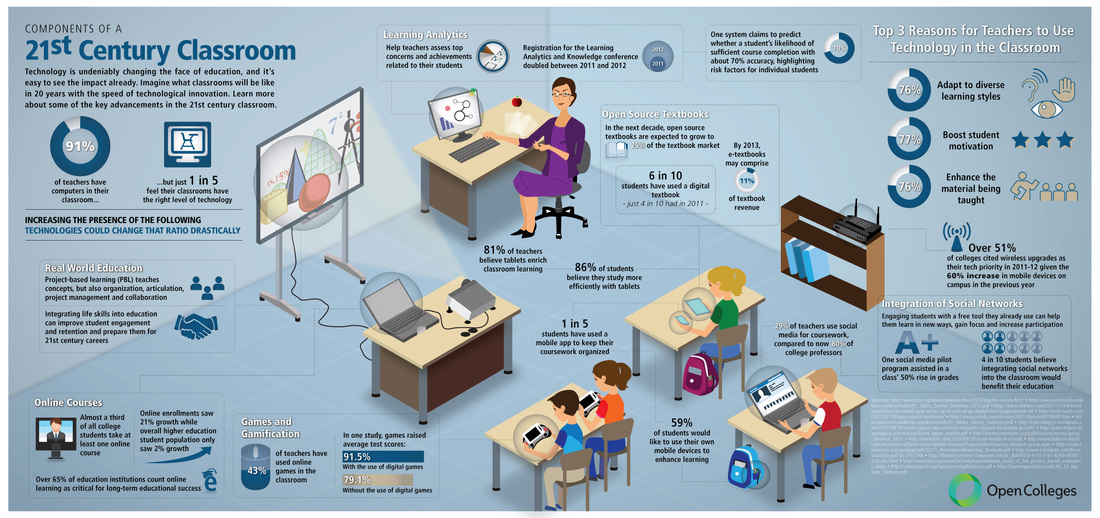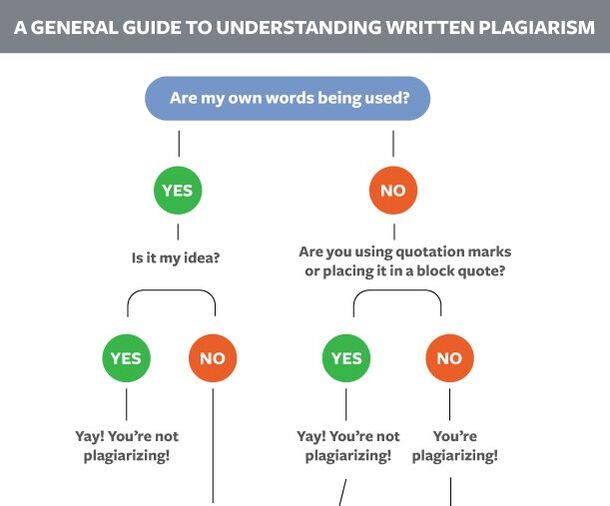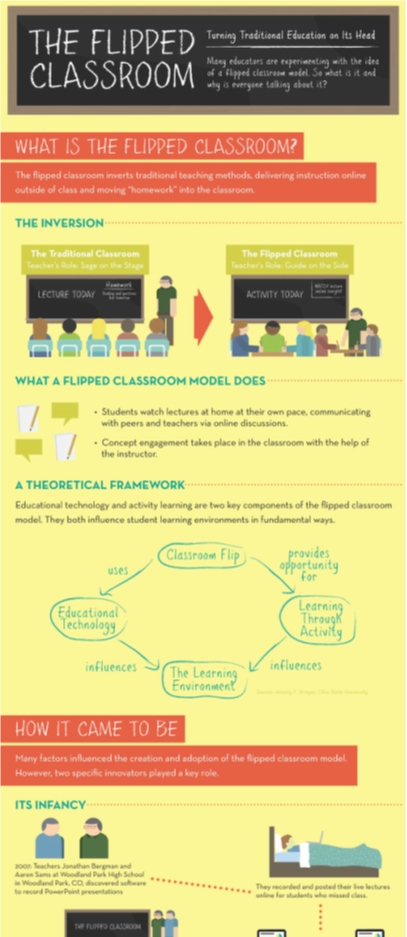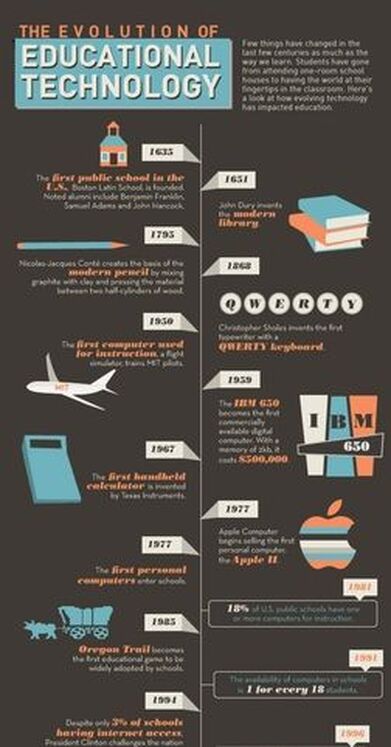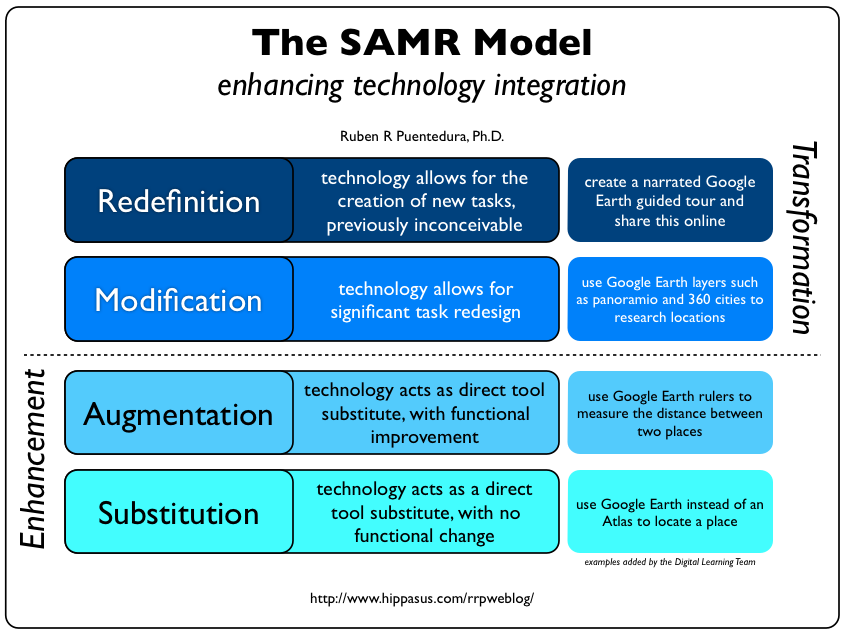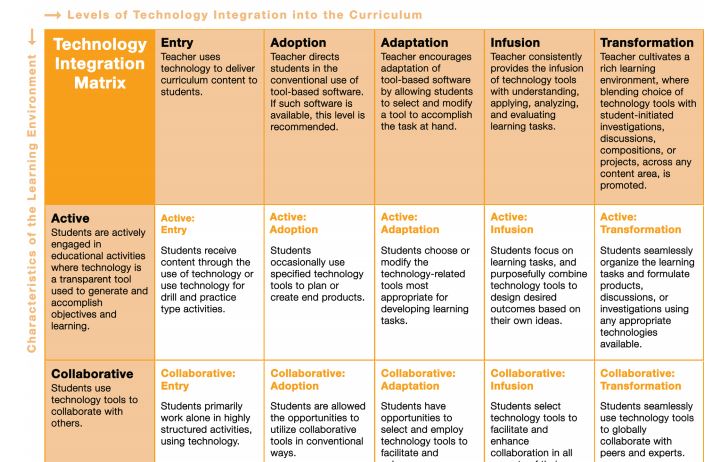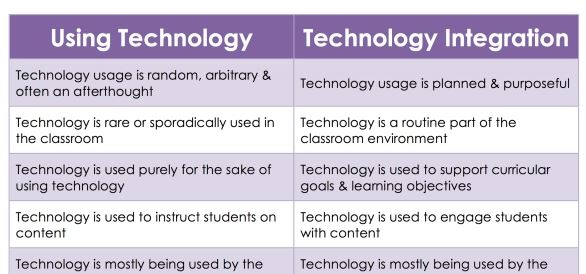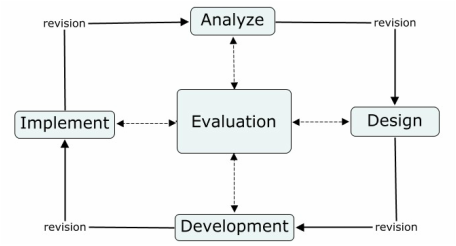21st CENTURY OPPORTUNITIES
Change how students see technology, as something they can do and not just consume!
#elearning, #learning, #edtech, #education, #training, #video, #industry, #onlinelearning, #course, #edchat, #mooc, #business, #tips, #marketing, #courses, #udemy, #guide, #onlinecourses, #teaching, #design, #online
21st Century Classroom
Introduction to 21st Century Learning with Helen Soule
Hear from Helen Soule, executive director of the Partnership for 21st Century Skills (P21), on how education technology is an essential part of the 4 Cs (communication, collaboration, creativity, and critical thinking) and what classrooms implementing the 4 Cs look like. Get tips on great edtech tools and teaching practices at www.commonsense.org/education
EDhub: Building a 21st Century Space to Transform Learning
A community raised $6 million to construct an innovative 30,000-square-foot facility complete with makerspaces and learning labs. Eminence Independent Schools GRADES K - 12 | EMINENCE, KY Explore more resources from this school: https://www.edutopia.org/school/emine...
|
An Open College Infographic:
Components of a 21st Century Classroom www.opencolleges.edu.au/21st_century_classroom click on image to enlarge
Edutopia: Remake Your Class Part 1: Planning for a Collaborative Learning EnvironmentVisit http://www.edutopia.org/remake for more tips and resources! Edutopia's three-part series follows a determined teacher at Roosevelt Middle School in San Francisco as he transforms his crowded classroom space to enable deeper learning. In Part 1, Mr. Mattice and the designers from The Third Teacher Plus figure out what's working and what's not.
What Will Schools Look Like in the Future?
Everyone wants America’s education system to do better. Ex-Googler Max Ventilla has a radical idea for how to make it work more like a social network. Ventilla’s AltSchool is building a highly-personalized education experience that gets better and cheaper as more students use it. Subscribe: https://freeth.ink/youtube-subscribe-... In a decade, AltSchool may not have just built some new schools but rather a new school system that all will be able to join. What do you think: is this the future of schools or an idea that won't succeed? Let us know what you think about education reform in the comments and subscribe to Freethink for more videos on the cutting edge of social and technological change.
|
Digital Literacy & Copyright
Crash Crouse: Copyright Basics - Intellectual Property 2This week, Stan Muller teaches you the basics of copyright in the United States. Copyright law is territorial, so we're going to cover the system we know the most about, and that's the US. Stan will talk about what kind of ideas can be copyrighted, who can get a copyright, and what protections the copyright grants.
*The Magic 8 Ball is a registered trademark of the Mattel corporation. Citation 1: Title 17 United States Code, section 101, Citation 2: 17 USC 101, Citation 3: 17 USC 101 C&C GRADE 5 — Copyright in the Real World (Part 1): Music and Movie
GRADE 5—Copyright in the Real World (Part 1): Music and Movies Find Lesson plans and slides at: https://www.copyrightandcreativity.or... This lesson gives students an experience that teaches them how to identify copyrighted work
Digital Literacy – What is digital literacy?Find out what digital literacy is in the first episode of our Digital Literacy course – part of our 'Go The Distance' course, giving you the skills and knowledge you need to be a top-class distance learner! For more information about digital literacy, English language and study skills for distance learners, visit us at http://www.bbc.co.uk/learningenglish/....
|
What is Plagiarism? - EasyBib BlogOverview of Plagiarism
Plagiarism – wondering what it is? It’s a big word with huge consequences. Plagiarism is using someone else’s direct words or ideas and passing them off as your own.
What is plagiarism? An informative Chart! - EasyBib Blog |
eLearning
The eLearning revolution - In a nutshellThe eLearning Revolution - expert advice from John Curran at Designed For Learning - http://in.a-nut.sh/Designedforlearning
TED Talks: New experiments in self-teaching - Sugata Mitrahttp://www.ted.com Indian education scientist Sugata Mitra tackles one of the greatest problems of education -- the best teachers and schools don't exist where they're needed most. In a series of real-life experiments from New Delhi to South Africa to Italy, he gave kids self-supervised access to the web and saw results that could revolutionize how we think about teaching.
|
TED Talks: Bring on the Learning Revolution! - Ken RobinsonIn this poignant, funny follow-up to his fabled 2006 talk, Sir Ken Robinson makes the case for a radical shift from standardized schools to personalized learning — creating conditions where kids' natural talents can flourish.
Episode 6: Kids Speak Out About Online Learning [Teen Edition] - Part 1
Barbara Harrison and teens from all around the globe talk about online learning and the challenges everyone faces. Middle School teacher Erin Rafferty from Graded - The American School of São Paulo offers insights and helpful suggestions for distance learning. Join us for future conversations by signing up at kidspeakout.me.
|
Online Learning,
The 'Flipped' Classroom
A 'Blended' Learning Environment
A Guide to the Flipped Classroom"Flipping" has become a buzzword. Maybe a colleague down the hall is trying it, or you're thinking about it yourself. Or maybe you're still not exactly sure what it is.
We've compiled a booklet, downloadable below, designed to serve as a quick primer on this growing—and sometimes controversial—teaching approach. It contains... Lawrence Public Schools: Disrupting the Factory Model with Blended LearningLawrence Public Schools, in Lawrence, KS, sought to maximize teacher time with students and increase student engagement. Lawrence strategically implemented elementary, middle, and high school blended learning classrooms powered by Blackboard's innovative solutions. Lawrence gathered overwhelming survey, assessment, and anecdotal evidence demonstrating improved student engagement and the maximization of teachers' time with students.
Edutopia: The Flipped Class: Is Flipping for Everyone?Discover how some teachers have creatively applied the flipped learning model to increase quality class time in PE, woodworking, dance education, and elementary classrooms: https://www.edutopia.org/blog/flippin...
ReasonTV: Ending the Classroom Factory Model: How Technology Will Personalize Education"With the opportunity of online learning coming on,…what we talk about is shifting from this factory model system to a student-centered one that personalizes for each and every child," says Michael Horn, co-founder of the Clayton Christensen Institute and co-author of the new book Blended: Using Disruptive Innovation to Improve Schools.
Tedx: Blending technology and classroom learning: Jessie Woolley-WilsonJessie Woolley-Wilson is an eLearning leader who has served as President of LeapFrog SchoolHouse, Blackboard, and now as Chair, President and CEO of DreamBox Learning, creator of the Intelligent Adaptive Learning platform that teaches students at any level of understanding how to become better junior mathematicians.
ReasonTV: Silicon Valley Wants to Teach Your KidsIf you are someone who grew up sitting in a classroom every day; facing the chalkboard and watching the seconds tick by on a clock until the bell rang, then online education may feel a bit strange at first. But people like Tom Vander Ark, the CEO of Getting Smart, say that learning online is not only the future of education but one of the ways to make it more effective.
Khan Academy: You Can Learn AnythingKhan Academy is on a mission to unlock the world's potential. Most people think their intelligence is fixed. The science says it’s not.
It starts with knowing you can learn anything. Join the movement at khanacademy.org/youcanlearnany.... |
What a 'flipped' classroom looks likeClintondale High, just outside of Detroit, is the nation's first completely flipped school, meaning teachers record lectures for students to watch online outside of class; and what was once considered homework is now done in class, allowing students to work through assignments together and ask teachers for help if they run into questions.
Edutopia: Blended Learning: Making it Work in Your ClassroomA school-wide approach to blended learning that allows teachers the flexibility to define and implement online instruction that meets their students needs.
P.K. Yonge Developmental Research School GRADES K-12 | GAINESVILLE, FL Explore more resources from this school: www.edutopia.org/school/pk-yo... The Flipped ClassroomPeer into Aaron Sams' classroom as he explains why he flipped his classroom. Aaron Sams, along with Jonathan Bergmann were the first to flip their classes. The currently teach in Woodland Park Colorado and are writing a book about the Flipped Class.
Jon Bergmann on the Flipped Classroom Part 1Bergmann, the coauthor of Flip Your Classroom, answers the question: How do you turn the flipped classroom into a more active experience? -YouTube.com
Jon Bergmann on the Flipped Classroom Part 2Bergmann, the coauthor of Flip Your Classroom, gives advice to teachers creating their own videos. -YouTube.com
What is a flipped classroom?A flipped classroom (or flip teaching) reverses the traditional teaching methodology, giving students access to new material at home, usually via screen casting, while class time is used to assimilate this knowledge via debates, problem solving and critical thinking. When flipping a classroom, the teacher is able to...
The mission of the Flipped Learning Network™ is to provide educators with the knowledge, skills, and resources to successfully implement Flipped Learning. The goals of the FLN are to:
Ready to FLIP Your Classroom?Welcome to FirstYearFlipped! This website was built as a resource to help teachers take on the task of flipping their classroom with the goal of improving instruction and changing the way students learn. Under the Flipped Classroom Model, the student's learning environments are changed in a way that puts...
The Teacher’s Guide To Flipped ClassroomsSince Jonathan Bergman and Aaron Sams first experimented with the idea in their Colorado classrooms in 2004, flipped learning has exploded onto the larger educational scene. It’s been one of the hottest topics in education for several years running and doesn’t seem to be losing steam.
Basically, it all started when Bergman and Sams first came across a technology... The Flipped Classroom Guide for TeachersAt the Teacher's Guide to Flipped Classroom you will be able to answer what is a flipped classroom, how does a flipped classroom contribute to student learning, the top benefits and disadvantages of a flipped classroom, and last but not least, how to...
The Practical Guide to Flipping Your ClassroomA white paper for instructors and administrators looking to improve student engagement in and outside of class.
How to flip your classroomFlipping is easy – and with a little thought and planning, teachers can use the flipped model to create engaging learning experiences for their students. This section covers the nuts and bolts of flipping – from...
|
Multimedia Learning
Richard Mayer’s 12 Principles of Multimedia Learning
Richard E. Mayer
Richard E. Mayer is an American educational psychologist who has made significant contributions to theories of cognition and learning, especially as they relate to problem solving and the design of educational multimedia. Wikipedia
Selected Books
Summary: A cognitive theory of multimedia learning based on three main assumptions: there are two separate channels (auditory and visual) for processing information; there is limited channel capacity; and that learning is an active process of filtering, selecting, organizing, and integrating information.
Originator: Richard Mayer (1947-) Key terms: dual-channel, limited capacity, sensory, working, long-term memory Cognitive Theory of Multimedia Learning (Mayer) The principle known as the “multimedia principle” states that “people learn more deeply from words and pictures than from words alone” (p. 47)[1]. However, simply adding words to pictures is not an effective way to achieve multimedia learning. The goal is to instructional media... Cognitive Theory of Multimedia Learning (Mayer)The Multimedia PrincipleExplore how using words and pictures in eLearning produces better results than just using words alone.
5 questions... for Richard E. Mayer - elearn Magazine
Professor Richard E. Mayer is known for his research-based approach to the use of multimedia in learning, which has resulted in more effective online courses. Mayer's 12 Principles of Multimedia Learning are a Powerful ...
Mayer's 12 Principles of Multimedia Learning are a Powerful Design Resource · Let's look at how some of ... Mayer's principles for multimedia learning | instructional design
Richard Mayer is professor of psychology at the University of California, Santa ... In 2001, he set out his principles for multimedia learning, which have become a ... 12. Image principle. People do not necessarily learn better from a multimedia ... |
Richard Mayer’s 12 Principles of Multimedia Learning are the prevailing design resource.
Research-based principles for multimedia learningHILT hosted Richard E. Mayer, Professor of Psychology at the University of California, Santa Barbara, for a presentation and discussion about research principles for multimedia instruction. The presentation took place in Sever Hall, May 5, 2014. For more information about the HILT Scholar to Practitioner Speaking Series, please visit: http://hilt.harvard.edu/scholar-pract....
Talking Multimedia Learning with Dr. Richard MayerIn this episode, I interview Dr. Richard Mayer. He is a Professor of Psychology at the University of California Santa Barbara. Dr. Mayer has written over 500 publications including 30 books that include Computer Games for Learning, Applying the Science of Learning, e-Learning and the Science of Instruction: Third Edition (with R. Clark), Multimedia Learning: Second Edition, Learning and Instruction: Second Edition, Handbook of Research on Learning and Instruction (co-editor with P. Alexander) and the Cambridge Handbook of Multimedia Learning: Second Edition (editor). The focus of the interview is on multimedia instruction. Dr. Mayer describes what multimedia instruction is and why it should be part of teaching and learning. He provides a concise overview of his cognitive theory of multimedia learning. He discusses his current research interests as well as where he sees research on multimedia instruction heading. The interview ends with advice he has for those developing multimedia instruction. You can read more about Dr. Mayer by visiting https://www.psych.ucsb.edu/people/fac...
|
Learning Standards
Ohio’s Learning Standards for Technology
The 2017 Ohio Learning Standards in Technology define what students need to know and be able to do to succeed in a technological world. Revised from the 2003 Ohio Technology Academic Content Standards, the 2017 standards incorporate three key technology disciplines:
|
THE ISTE STANDARDS
The ISTE Standards provide the competencies for learning, teaching and leading in the digital age, providing a comprehensive roadmap for the effective use of technology in schools worldwide. Grounded in learning science research and based on practitioner experience, the ISTE Standards ensure that using technology for learning can create high-impact, sustainable, scalable and equitable learning experiences for all learners.
For over 20 years the standards have been used, researched and updated to continuously reflect the latest research-based best practices that define success in using technology to learn, teach, lead and coach. The standards have been adopted in all 50 U.S. states and many countries throughout the world. Aligned to UNESCO’s Sustainable Development Goals, the standards are available in eight languages. National Technology StandardsNational technology standards have been created by several organizations in the interest of advancing student achievement. Resources are available for teachers and administrators to use within their school buildings and districts. For more information, click on the links below.
|
Technology Integration
Tedx: A different way to think about technology in education, Greg ToppoWhen did Technology become a tool in our lives? A quick synopsis of technology as adopted throughout history.
The Evolution of Educational TechnologyClick on image to navigate to site
SAMR
|
Edutopia: An Introduction to Technology IntegrationIntegrating technology with classroom practice can be a great way to strengthen engagement by linking students to a global audience, turning them into creators of digital media, and helping them practice collaboration skills that will prepare them for the future. For more about technology integration, visit www.edutopia.org/technology-in....
Educational Technology ResourcesArizona Technology Integration MatrixA Resource Supporting the Full Integration of Technology in Arizona SchoolsWhat is the Arizona Technology Integration Matrix?The Technology Integration Matrix (TIM) illustrates how teachers can use technology to enhance learning for K-12 students. The TIM incorporates five interdependent characteristics of meaningful learning environments: active, collaborative, constructive, authentic, and goal directed (Jonassen, Howland, Moore, & Marra, 2003). The TIM associates five levels of technology integration (i.e., entry, adoption, adaptation, infusion, and transformation) with each of the five characteristics of meaningful learning environments. Together, the five levels of technology integration and the five characteristics of meaningful learning environments create a matrix of 25 cells.
Click on image to navigate to site
teachbytes - What’s the Difference Between “Using Technology” and “Technology Integration”? Posted on 03.29.13 by ADITI RAOClick on image to navigate to site
ADDIE ModelThe ADDIE model is the generic process traditionally used by instructional designers and training developers. The five phases—Analysis, Design, Development, Implementation, and Evaluation—represent a dynamic, flexible guideline for building effective training and performance support tools. While perhaps the most common design model, there are a number of weaknesses to the ADDIE model which have led to a number of spin-offs or variations.
www.instructionaldesign.org/models/addie.html ADDIE PowToon |
Learning Management Systems (LMS) in the K-12 Academic World:
Learning Management SystemStratbeans serves large organisation to replace their classroom trainings with custom built e learnings.
Using these e learnings any subject can be taught. We send our business analysts to customer site and gather necessary information to create fresh e learnings. The Big Five
1. Google Classroom 2. Schoology 3. Canvas 4. D2L (Brightspace) 5. Blackboard Learn Google Classroom 101
Google Classroom is used by over 100 million teachers and students around the world for teaching and learning. In this video, you will learn how to set up classes, and host virtual classes with Meet, create and organize content on the Classwork page, and give consistent and quick feedback in the grading tool through auto populated comments, and rubrics. For training and more resources: g.co/firstdayofclassroom g.co/classroom/help g.co/classroom/new
Schoology IntroductionSchoology is an online learning, classroom management, and social networking platform that improves learning through better communication, collaboration, and increased access to curriculum and supplemental content.
|
Canvas - K12 Product VideoInstructure is a technology company committed to improving education. We provide instructors and students with modern tools and resources that empower and simplify the learning experience. Instructure offers Canvas, the open, easy-to-use, cloud-native learning management system, as well as Canvas Network, an index of open, online courses by educators everywhere — from Ivy League institutions to community colleges.
Brightspace LMS for K-12 LearningBrightspace is a learning management system that provides an engaging experience for junior grades through high school. Brightspace LMS for K-12 has been re-imagined with a new activity feed, standards-aligned lessons, a parent engagement experience, complete mobility, and a portfolio experience that even non-readers can use to capture evidence of their learning.
Learn more about D2L Brightspace LMS for K-12 at https://www.d2l.com/k-12/ Blackboard Parental Engagement SolutionToday's parents are always connected and expect the same of you. They're looking for real-time, personalized communications about their student. And they want to know that their child's school can reach them with critical information when it counts.
Discover how a branded district app can improve parent engagement in your K-12 district. Learn how to provide all the information parents need (grades, calendars, homework and more) complete with instant notifications to keep everyone informed |
Google
Apps for Education
Google for Education 101What does it mean for a classroom or school to "go Google"? Learn all about Chromebooks, Google Apps for Education and Tablets with Google Play for Education and how together these powerful tools can transform teaching and learning.
The Google Apps for Education Suite
|
Google Training Resources:Introducing Tablets with Google Play for EducationSchools in Hillsborough, New Jersey were among the first to try out Nexus 7 tablets with Google Play for Education. See the difference it made for students, teachers, and administrators. Learn more at google.com/edu/tablets
Chromebooks:Coming to a Chromebook near you...Fast. Simple. Secure. And it’s only getting better. Come find out how.
See all the talks from Google I/O 2016 here: https://goo.gl/olw6kV For more information on Google, please review my two pages on this revolutionary company |
Engaging 21st Century Content
Technology in the Classroom:
|
Camtasia Screen Recorder and Video EditorCamtasia is a screen recorder and video editor that is simple-to-use, but flexible enough to take on larger projects down the road. You get a high-quality screen recorder with a built-in video editor. This allows you to easily record and edit your video and audio. Camtasia is built for anyone who needs to make a how-to, tutorial, or training video in just a few easy steps.
Create E-Learning Content with iSpring FreeLearn how to easily create simple SCORM courses with quizzes using iSpring Free.
For more information on engaging 21st century content, please review my K-12 Technology Tools page or my Instructional Design page. |
AR/VR
TedEd: Matt Mills - Image recongnition that triggers augmented reality
www.ted.com Matt Mills and Tamara Roukaerts demonstrate Aurasma, a new augmented reality tool that can seamlessly animate the world as seen through a smartphone. Going beyond previous augmented reality, their "auras" can do everything from making a painting talk to overlaying live news onto a printed newspaper.
If you have questions or comments about this or other TED videos, please go to support.ted.com Panel Discussion at SF Design Week on AR, AI and VR | Adobe Creative CloudSagar Patel, Ana Arriola, Saschka Unseld and Jamie Myrold chime in on AR, VR, and AI in this panel discussion that took place at San Francisco Design Week.
|
TEDxGateway: How Augmented Reality Will Change Education Completely | Florian RadkeFlorian Radke talks about how Augmented reality is not a toy, it’s a powerful tool that will help solve some of the worlds biggest problems. If we do it right, it can be the next great platform for education, human connection and productivity. Like Iron man, we all will soon be surrounded by data and 3D models that we can interact with, as early as the year 2025. Florian is currently leading communications at Meta, an augmented reality (AR) company that is one of the companies at the forefront of designing our AR future. Meta’s focus is not on creating experiences that distract or pull us out of the real world, but rather that enhance our natural environments and facilitate greater learning and communication than has been available before. The possible applications range from more immersive classroom learning to a collaborative creative tool that can be used in real time to bring storytellers together from around the world. This talk was given at a TEDx event using the TED conference format but independently organized by a local community. Learn more at http://ted.com/tedx
|
Digital Technologies
TedEd: Inside your computer - Bettina Bair
How does a computer work? The critical components of a computer are the peripherals (including the mouse), the input/output subsystem (which controls what and how much information comes in and out), and the central processing unit (the brains), as well as human-written programs and memory. Bettina Bair walks us through the steps your computer takes with every click of the mouse.
Lesson by Bettina Bair, animation by Flaming Medusa Studios. ed.ted.com/lessons/inside-your-computer-bettina-bair#discussion Discovery EducationInvention: Computer Technology
Subject: Technology |Grade(s): 6-8 |Duration: One class periods www.discoveryeducation.com/teachers/free-lesson-plans/invention-computer-technology.cfm HowStuffWoks: Computer TourHave you always wondered what is on the inside of your computer? This video takes a look at the inside of a computer and examines the seven major parts. Credits: , HowStuffWorks
Education WorldWhat's Inside My Computer?
Subjects: Arts & Humanities--Language Arts Educational Technology-- Computers www.educationworld.com/a_lesson/02/lp285-01.shtml |
Download: The True Story of the Internet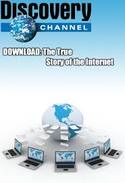
This documentary is about the technological, cultural, commercial and social revolution that has drastically and fundamentally changed our lives forever; this is a story in which 20-year-olds become overnight billionaires, create, destroy and re-create an immense amount of wealth in a mere ten years. The men and women who made it possible come forward to speak on the subject in this documentary.
The founders of eBay, Yahoo, Amazon, Netscape, Google and many others tell amazing stories of how, in ten short years, the Internet took over our lives. These extraordinary men and women tell us how they went from being computer obsessed nerds to being 21st-century visionaries in merely a decade. And, also how they made untold billions along the way! The style of the story-telling is very anecdotal and personal. With first-hand testimony from the people that matter, a story is told that has all the excitement of a thriller — full of battles and back-stabbing, moments of genius and moments of sheer hilarity. Download is hosted by technology journalist John Heileman, whose edgy and combative style enthralls and captivates the audience changing their outlook towards internet forever! Science Channel link: www.sciencechannel.com/video-topics/gadgets-and-tech/download-the-true-story-of-the-internet-bill-gates/ Documentary Tube link: www.documentarytube.com/videos/download-the-true-story-of-the-internet Invention LiteracyInvention Literacy Discussion with Jay SilverInvention literacy is the ability to read and write human made stuff, from toasters to apps. People think inventors perform magic, but invention is no more magical than reading and writing a sentence. There is a grammar to inventing from mechanical tools, to design thinking, coding, and beyond. There is a literature of inventions, from bicycles to televisions, all around us to draw inspiration from. Just as Thoreau read Emerson’s writings, so too did Edison read Tesla’s inventions. The functional pieces of inventions: transistors, bent sheets of aluminum, a “for loop” in software, these are like a large alphabet. As one learns to “sound out the words” of inventing, one begins to see a product not as a “black box” but as a collection of comprehensible pieces which come together to make up...
Jay Silver
May 16, 2016 |
Programming & Game Labs
Code.org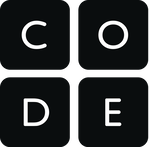
Launched in 2013, Code.org® is a non-profit dedicated to expanding access to computer science, and increasing participation by women and underrepresented students of color. Our vision is that every student in every school should have the opportunity to learn computer science. We believe computer science should be part of core curriculum, alongside other courses such as biology, chemistry or algebra.
Code.org: "Code Stars" - What Most Schools Don't TeachLearn about a new "superpower" that isn't being taught in 90% of US schools.
Starring Bill Gates, Mark Zuckerberg, will.i.am, Chris Bosh, Jack Dorsey, Tony Hsieh, Drew Houston, Gabe Newell, Ruchi Sanghvi, Elena Silenok, Vanessa Hurst, and Hadi Partovi. Directed by Leslie Chilcott. Executive producers Hadi and Ali Partovi. Udacity
Our mission is to bring accessible, affordable, engaging, and highly effective higher education to the world. We believe that higher education is a basic human right, and we seek to empower our students to advance their education and careers.
Introduction to UdacityUdacity provides online courses & credentials, built by AT&T, Google, etc. so professionals become Data Analysts, Web or Mobile Developers.
Kodu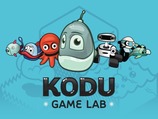
Kodu lets kids create games on the PC and Xbox via a simple visual programming language. Kodu can be used to teach creativity, problem solving, storytelling, as well as programming. Anyone can use Kodu to make a game, young children as well as adults with no design or programming skills.
Kodu Game LabKodu Game Lab teaser video including Hannah and President Obama.
General Programming Terminology
Algorithm: A set of guidelines for solving a problem. Algorithms are written using a language that computers can understand to tell them how to calculate and process data. For instance, a search engine uses an algorithm to... |
CodecademyCodecademy is an education company. But not one in the way you might think. We're committed to building the best learning experience inside and out, making Codecademy the best place for our team to learn, teach, and create the online learning experience of the future.
Education is old. The current public school system in the US dates back to the 19th century and wasn't designed to scale the way it has. Lots of companies are working to "disrupt" education by changing the way things work in the classroom and by bringing the classroom online. Codecademy founders discuss growthLife Stories: how Tommy Nicholas transformed his career with CodecademyScratch
With Scratch, you can program your own interactive stories, games, and animations — and share your creations with others in the online community.
Scratch helps young people learn to think creatively, reason systematically, and work collaboratively — essential skills for life in the 21st century. Scratch is a project of the Lifelong Kindergarten Group at the MIT Media Lab. It is provided free of charge. Scratch 2.0 Overview VideoScratch is a programming language that makes it easy to create interactive art, stories, simulations, and games -- and share those creations online.
Imagine, program, and share at http://scratch.mit.edu. Khan Academy
Khan Academy is a small nonprofit with a big mission: a free, world-class education for anyone,
anywhere. With fewer than 100 employees, Khan Academy serves more than 15 million users each month with over 100,000 videos and exercises. Computing
We live in an age of computers. You're using one now to consume the content of this website, but if you want to, you could become one of the creators of computer technology. Here on Khan Academy, you can learn how to code computer programs, how to design algorithms that make computers more efficient, and discover what a career in computing could look like. Khan Academy Computer Science Launch |
Educational Gaming
Games For Change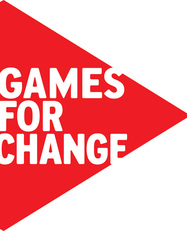
Our Mission Statement:
Catalyzing Social Impact Through Digital Games What we do: Founded in 2004, Games for Change facilitates the creation and distribution of social impact games that serve as critical tools in humanitarian and educational efforts. We aim to leverage entertainment and engagement for social good. To further grow the field, Games for Change convenes multiple stakeholders, highlights best practices, incubates games, and helps create and direct investment into new projects. Ted Talks: Jane McGonigal - Gaming can make a better worldGames like World of Warcraft give players the means to save worlds, and incentive to learn the habits of heroes. What if we could harness this gamer power to solve real-world problems? Jane McGonigal says we can, and explains how.
For more information on gaming and gamification, please review my page on this topic. |
G4C14: Josh Larson / Transformative Game Design Through GraceJosh Larson discusses the concept of grace in game design and in That Dragon, Cancer, a poetic, surreal video game in which players explore the immersive world of co-creators Ryan and Amy Green as they raised their son Joel, a child who fought terminal cancer for 4 years and found hope in the shadow of death. If grace can inspire players to extend a little more grace to others -- to better value someone else as a human -- how could that influence life choices, policy creation, and positive societal change?
Games For Change Educational Games:
|
Big Data
TedEd: Big Data - Tim SmithThere is a mind-boggling amount of data floating around our society. Physicists at CERN have been pondering how to store and share their ever more massive data for decades - stimulating globalization of the internet along the way, whilst 'solving' their big data problem. Tim Smith plots CERN's involvement with big data from fifty years ago to today.
View full lesson: http://ed.ted.com/lessons/exploration... TEDx: The Key to Educational Improvement: Data and How We Use It -Jeff EdmondsonJeff Edmondson is the executive director of Strive, a partnership of postsecondary, K-12, business, philanthropic, non-profit, and civic organizations in Cincinnati and Northern Kentucky, which is aimed at increasing educational aspirations, achievement, and attainment of students throughout the region. The lessons learned from the development of this partnership are currently being applied in four cities across the country—through a collaborative relationship with Living Cities and the Coalition of Urban Serving Universities—to help ensure resources in these regions are efficiently and effectively supporting the success of every child.
Big Data will impact every part of your life | Charlie Stryker | TEDxFultonStreet
This talk was given at a local TEDx event, produced independently of the TED Conferences. 2,500,000,000,000,000,000 bytes of data (2.5 exabytes) every day is what we currently generate. The mid-decade turning point we are now experiencing is an unprecedented ability to process these data, to generate insights. These insights, gleaned from new data processing techniques, can impact how we shop, how we find jobs, dating, and even how doctors diagnose illnesses.
Dr. Charles W. Stryker is the Founder and President of a professional advisory firm, Venture Development Center, Inc. (VDC), and he has been recently recognized as the Data Innovator of the Year 2013. His business has a focused practice of assisting “Big Data” firms in creating, developing and commercializing Information Services properties. |
Data-driven Education | Khurram Virani | TEDxWestVancouverEData-driven education - it's not what you think. How Khurram is using data-driven education to personalize learning. Khurram is the co-founder and Head of Education at Lighthouse Labs, where he has been disrupting the way people learn to code. After spending 10 years as a developer and entrepreneur, he saw a problematic divide in technology between the way people learn and the way they work. By founding Lighthouse Labs and The HTML500, Canada's largest coding bootcamp and learn-to-code event respectively, he brought tech best practices into education to empower 100's of people with today's most valuable career skills - and taught them faster than ever before. This talk was given at a TEDx event using the TED conference format but independently organized by a local community. Learn more at http://ted.com/tedx
Explaining Big DataBig Data is the next big thing in computing. This video explains Big Data characteristics, technologies and opportunities. For more information, see http://www.explainingcomputers.com/bi...
The beauty of data visualization - David McCandlessTedEd: David McCandless turns complex data sets, like worldwide military spending, media buzz, and Facebook status updates, into beautiful, simple diagrams that tease out unseen patterns and connections. Good design, he suggests, is the best way to navigate information glut -- and it may just change the way we see the world
|
